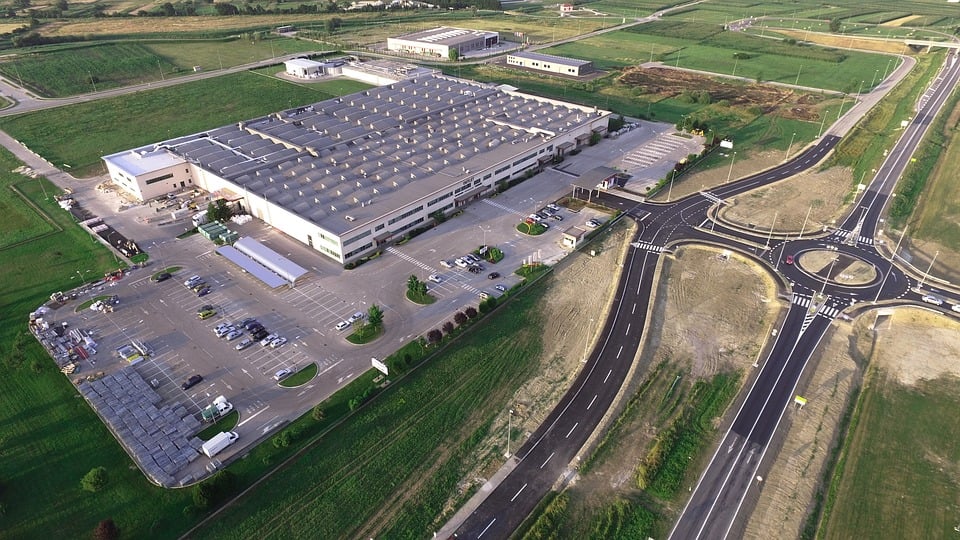Sustainability | July 20, 2023
Taking action on science-based targets? Start with these questions.
Science-based targets are trending for a reason: Setting energy and sustainability goals based on the latest climate science is key to reducing greenhouse gas emissions and staving off the worst effects of climate change.
Many organizations have publicly declared goals like achieving carbon neutrality by 2050 or sooner. To date nearly 5,500 organizations around the world have signed on to the Science-Based Targets Initiative (SBTi), setting clear emissions reduction targets grounded in climate science.
The move toward science-based targets is a win-win for sustainability and your organization’s competitive edge. Improving the environmental performance at facilities helps you maximize the triple bottom line, driving profit, people, and planet — while mitigating regulatory uncertainty and ultimately enhancing brand reputation and competitiveness.
But often there’s a disconnect between the people setting broad, overarching goals, and those charged with reaching them across a real estate portfolio.
To connect the gaps, sustainability leaders working in these companies must create a clear, informed, and incremental roadmap that translates targets into a detailed strategy across the portfolio. First step: Explore what’s possible with strategic questioning.
Five INTERNAL questions to ask
Consider the following internal-facing questions on the road to achieving science-based targets.
- WHO - Who do we need to engage on our internal team to build company-wide buy-in for energy and sustainability projects?
Facility sustainability strategy is best and most cost-effective with an all-team approach, including leaders from sustainability, procurement, energy, facilities, IT, and building controls departments. Start talking to facilities folks, IT folks, finance, and beyond to identify and line up appropriate stakeholders. - WHAT - What facility data do we have now, what do we need to enable long-term planning now, and what will we need in the future?
It can be challenging and costly to collect the data you’d like — so start with identifying what data you have today and the gaps - WHERE - Where do you need to publish your plan for achieving targets?
Start with identifying internal communications and then consider where you will eventually want to talk about your plan in the external-facing sustainability report, the website, and potentially other disclosure platforms.
- WHEN - When do we need to set interim goals in order to realize the bigger picture target — and what should they be?
For example, let’s say you know you need to deliver a net-zero portfolio in 25 years. What mid-term milestones could be set to help make that happen? - HOW - How can you ensure the right amount of staff time and resources are available to focus on the effort?
Often people think they can work on energy and sustainability performance in addition to their day-to-day roles and responsibilities. Be realistic about how much time it’s going to take and whether you and your team can take on all the work to make progress on the desired timeline.
Once you’ve done some internal detective work, it’s time to start questioning outside sustainability providers that can help speed along your progress.
Key questions to ask SOLUTIONS PROVIDERS
Third-party sustainability consultants abound and may be vying for your attention as we speak. How to separate the worthy contenders from the less-than?
The following are critical questions to help you choose a partner most likely to help you reach your science-based targets while delivering maximum business value.
- How would you recommend we approach data collection and management?
Look for service providers who can help you decide what data is absolutely critical to establishing a baseline and tracking progress over time (i.e., list of facilities with square footage and whole-building energy data), versus what’s just nice to have and not worth the expense.
Be wary of anyone advocating you boil the ocean and get all the data. The key is to prioritize data without sacrificing cost efficiency. - What tools are you equipped with to help clients bridge gaps between sustainability and facilities teams?
Look for service providers with a proven capability in breaking down silos between departments — ideally within their own organization, too. - What types of investments in facility performance could you recommend we make to further reduce emissions — while delivering return on investment? What might be our general good, better, best scenarios?
The right partner can help you identify various pathways to achieving science-based targets, from efficiency projects and renewable energy projects to equipment replacements.
For example, your program will benefit from a provider who’s well-versed in navigating the CapEx/OpEx differences between tactics like buying renewable energy credits (line-item expenses) versus measures that actually drive cost savings, such as energy efficiency or a virtual power purchase agreement (VPPA).
They should also be able to show direct expertise in facility condition assessment and management like roof, HVAC, and pavement asset management — as each relates to ESG and business value alike. - What is your approach to program management? How will teaming up with your company provide a competitive advantage to my business?
Most consultants do only that, consulting. It’s important to find a provider who can partner with you on implementation as well. Find out how the provider will help you optimize both GHG emissions and financial performance with design-build services that help prioritize replacements and monitor metrics. Ideally, partnering with them will save you time that you can then use to focus on your other business priorities.
Realizing science-based targets, one question at a time
Setting science-based targets is an important step for your organization — the next is to explore the questions necessary to bring those objectives to life.
Contact a Mantis pro today to discover practical ways to achieve your science-based goals.
Related Posts
Discover more content and insights from Mantis Innovation

Carbon Credits Explained: A Primer for Achieving Your ESG Goals
In the race to achieve net-zero emissions, carbon credits have become a crucial tool for companies with hard-to-abate emissions. As of 2024, almost half of the Fortune 500 companies have net zero

Five Trends Driving Data Center Facility Energy Optimization
Today’s digital economy, commercial and industrial digitalization, and the recent explosion in artificial intelligence and machine learning (AI/ML) powered computing are driving massive growth in

Modernizing Manufacturing Facilities: Practical Steps for Better Performance
In today's competitive manufacturing landscape, staying ahead requires more than maintaining the status quo. Modernizing facilities and operations is essential for improving efficiency, performance,

Modernizing Manufacturing Facilities: The Drivers and Direction
This blog is just a glimpse into the deep dive we take in our new white paper, Modernizing Manufacturing. Download the white paper here to skip the teaser and get the whole story. The stage is set